Damjan Kocjančič
Krok|Step|KorakMarek Grygiel
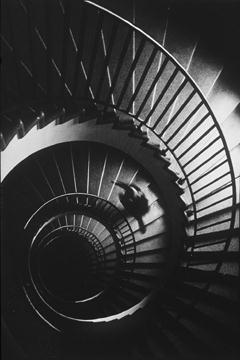
od koniec dwudziestego wieku pomimo pozornej różnorodności sztuka zaczyna ulegać pewnej unifikacji. Zagrożenia cywilizacyjne, osamotnienie jednostki, przytłoczenie wszechobecnością mediów powoduje, że coraz mniej wiemy o nas samych. Tylko artyści, nie zrażeni brakiem pozytywnych prognoz próbują dotrzeć albo niekiedy zbliżyć się do tzw. istoty rzeczy. Udaje się to tylko nielicznym. Szlachetne dążenie przeobrażają w prace artystyczne i tym samym starają się przybliżyć sobie i nam odpowiedzi na najtrudniejsze pytania.
The art of the last years of the twentieth century is becoming - in spite of its apparent heterogeneity - the subject of certain unification. Dangers of civilization, solitude of an individual, and overwhelming omnipresence of media - all this makes us to know less and less about ourselves.
Only the artists, undeterred by the absence of favorable forecasts, are trying to reach or sometimes to draw nearer to the heart of the matter. Only few have succeeded. They translate these noble aspirations into works of art while trying to bring themselves and us closer to the answers to the most difficult questions.

"Krąg przekonań nie zachowa tajemnicy"
Krog verovanj ne zadrzi skrivnosti"
"Circle of beliefs Secrets never keep"
Kerry King
Podobny charakter mają fotograficzne prace Damjana Kocjančica, artysty fotografa z Lubljany. Ciało ludzkie w ogromnej ekspresji i czaszka jako symbol śmierci. To proste zestawienie unaocznia nam odwieczną prawdę o kruchości naszego bytu i przemijalności tego świata. Może nie wydawać się to odkrywcze, ale warte uporczywego przypomnienia.
The photographic works of Damjan Kocjancic from Ljubljana are of similliar character. Human body full of expression and skull as a symbol of death. This simple juxtaposition confronts us with eternal truth about fragility of our existence and transitoriness of the world. It may not sound very revealing but it surly is worth of persistent reminding.
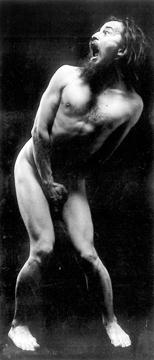
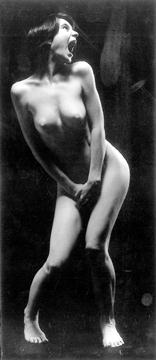
... i znów piszę do ciebie we wrzasku gołych piskląt. Jak ludzie. Goli i bezradni wrzeszczą swoim wstydem. Krzyczą w grozie nowego dnia. W strachu ponownego poznania, rozpaczy zdemaskowania. Rzucają na nią klątwy swoich życzeń. Prośby swoich lęków.z listu - Damjan Kocjančič
... In spet ti pisem ob vrescanju golicev. Kot ljude. Goli in nebogljeni vrescijo svojo sramoto. Kricjo v grozi svetlobe novega dne. V strahu ponovnega spoznanja, obupu rozkrikanja. Vanjo mecejo kletve svojih zelja. Prosnje svojih strahov...
iz pisma - Damjan Kocjančič
... and I am writing to you again in the midst of shrieking of nestling. Like people and frail screaming their own shame. Screaming in horror of the light of new day. In fear of repeated recognition, dispair of unmasking. Projecting oaths of their own wishes. Requests of their own fears...
from a letter - Damjan Kocjančič
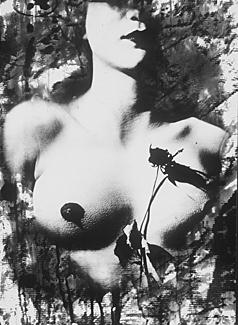
Od kilku lat, w miarę skromnych możliwości staramy się pokazać w Małej Galerii artystów z Europy Środkowej i Wschodniej. Po Węgrzech (z którymi mamy regularną wymianę), Czechach, Słowacji, Łotwie i Litwie prezentujemy teraz prace artysty ze Słowenii, kraju od niedawna politycznie samodzielnego, ale z długą tradycją ciekawej sztuki. Osiągnięcia grupy Laibach, znanej szeroko w świecie, niedawna wystawa zbiorowa grupy artystów słoweńskich w CSW na Zamku Ujazdowskim w Warszawie pozwalają sądzić, że sztuka słoweńska będzie również coraz lepiej znana w naszym kraju. Do tego ma przyczynić się również wystawa Damjana Kocjančica będąca fragmentem większego projektu realizowanego w Centrum Kultury Forum w Lubljanie, który w całości zostanie zaprezentowany w przyszłym roku w kilku miastach Europy.
From some years, if our modest possibilities allow us, we are trying to show in the Mala Gallery works of artists from Central and Eastern Europe. We were already presenting artists from Hungary (on regular exchange basis), Bohemia, Slovakia, Latvia and Lithuania. This time we present the work of the artist from Slovenia, the country with short history of political independence but with the long tradition of interesting art. The achievements of the widely recognized Laibach group, the recent collective exhibition of Slovenian artists in the Centre for Contemporary Art in the Ujazdowski Castle in Warsaw make us hope that Slovenian art will become better known in our country. This exhibition of Damjan Kocjancic which is a part of larger project realised by the Cultural Centre Forum from Ljubljana that will be presented next year in some European cities, should also add to that.
Zobacz też:
- Wernisaż w "Małej Galerii" (6 maja br.)
- Damjan Kocjančič w "Strip Core Internet Encyclopedia"
- Inne wystawy "Małej Galerii" w fotoTAPECIE
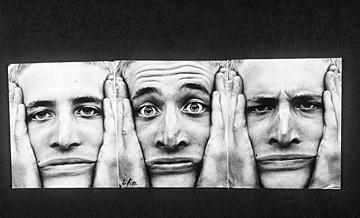
Copyright © 1997-2012 Marek Grygiel / Copyright for www edition © 1997-2012 Zeta-Media Inc.
e-mail: fti@zeta-media.com